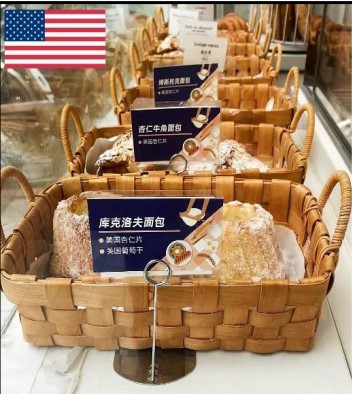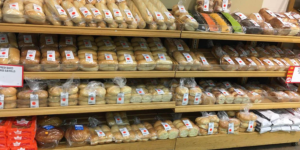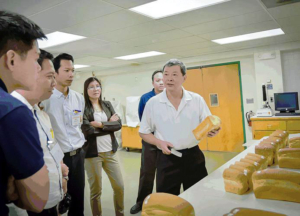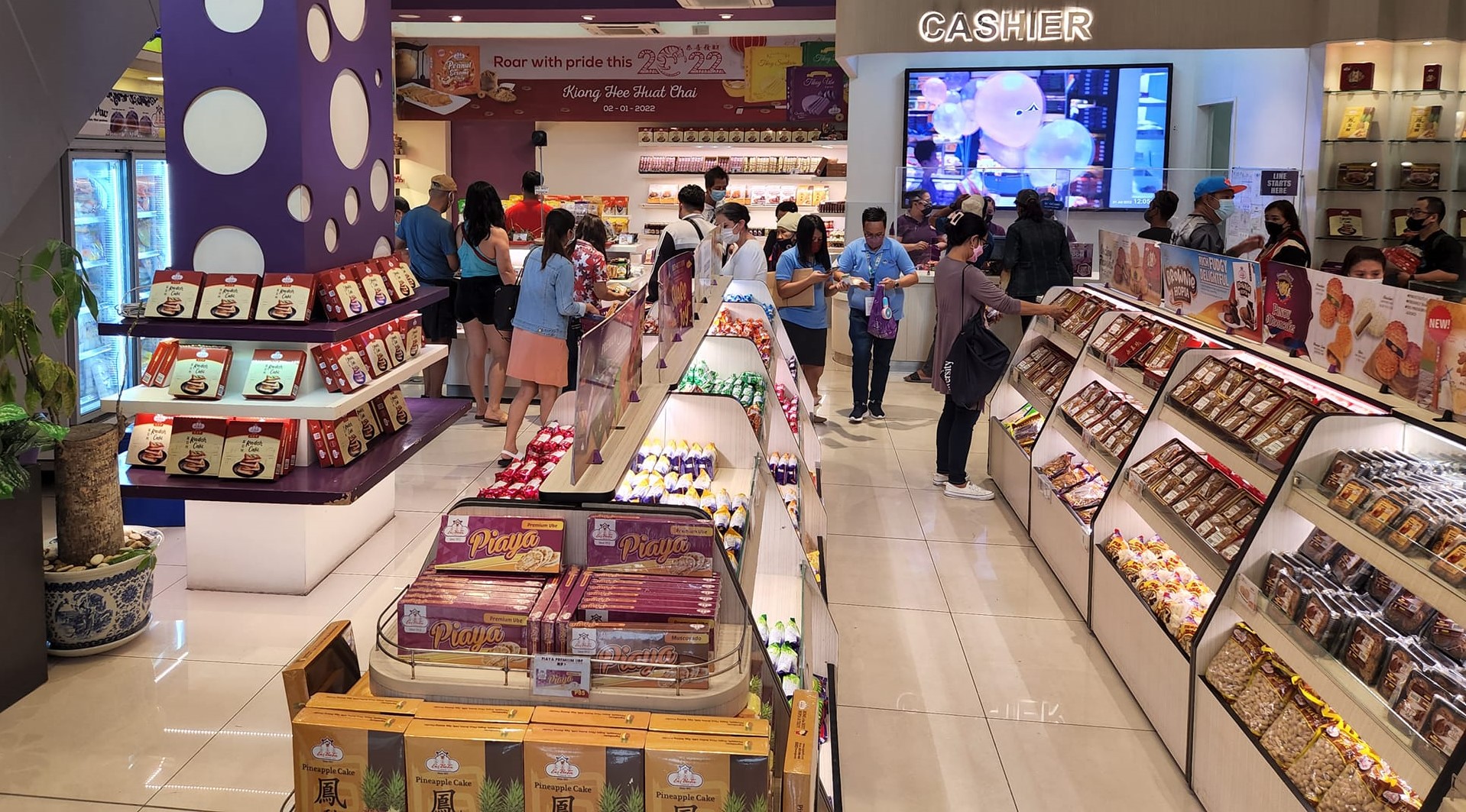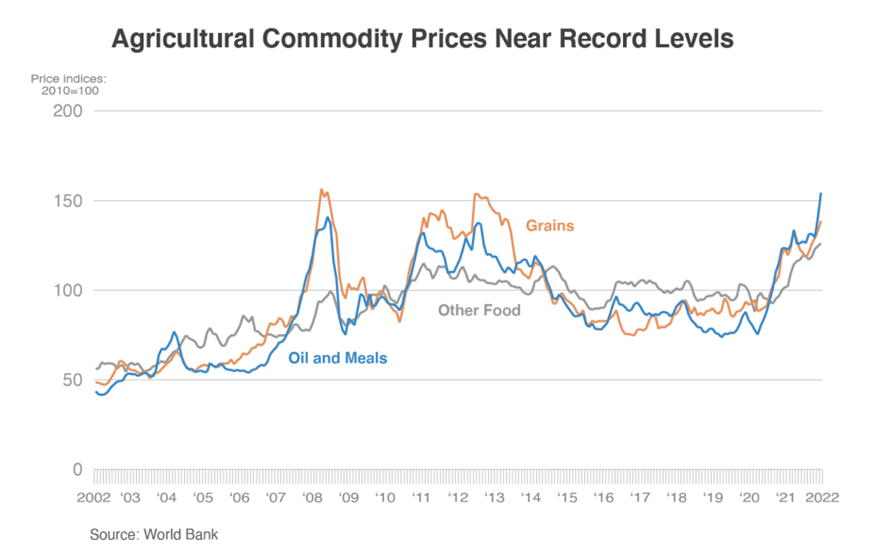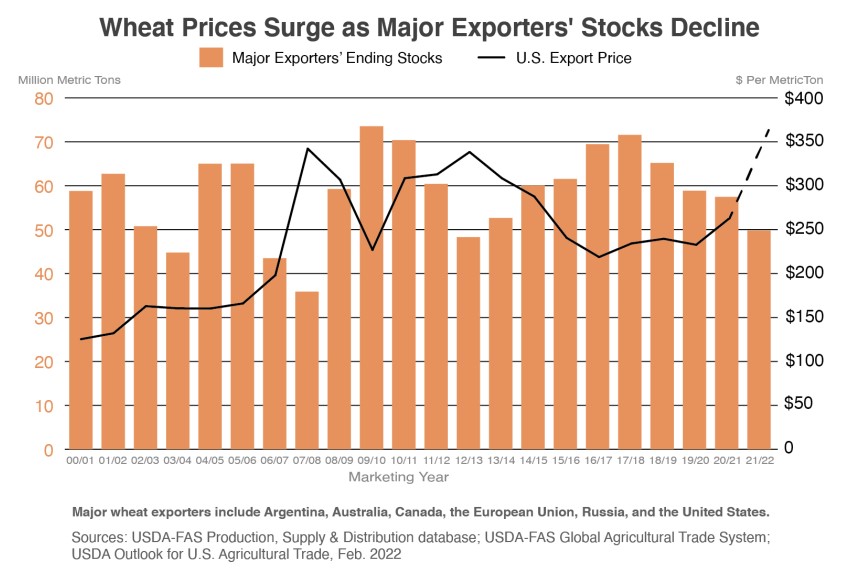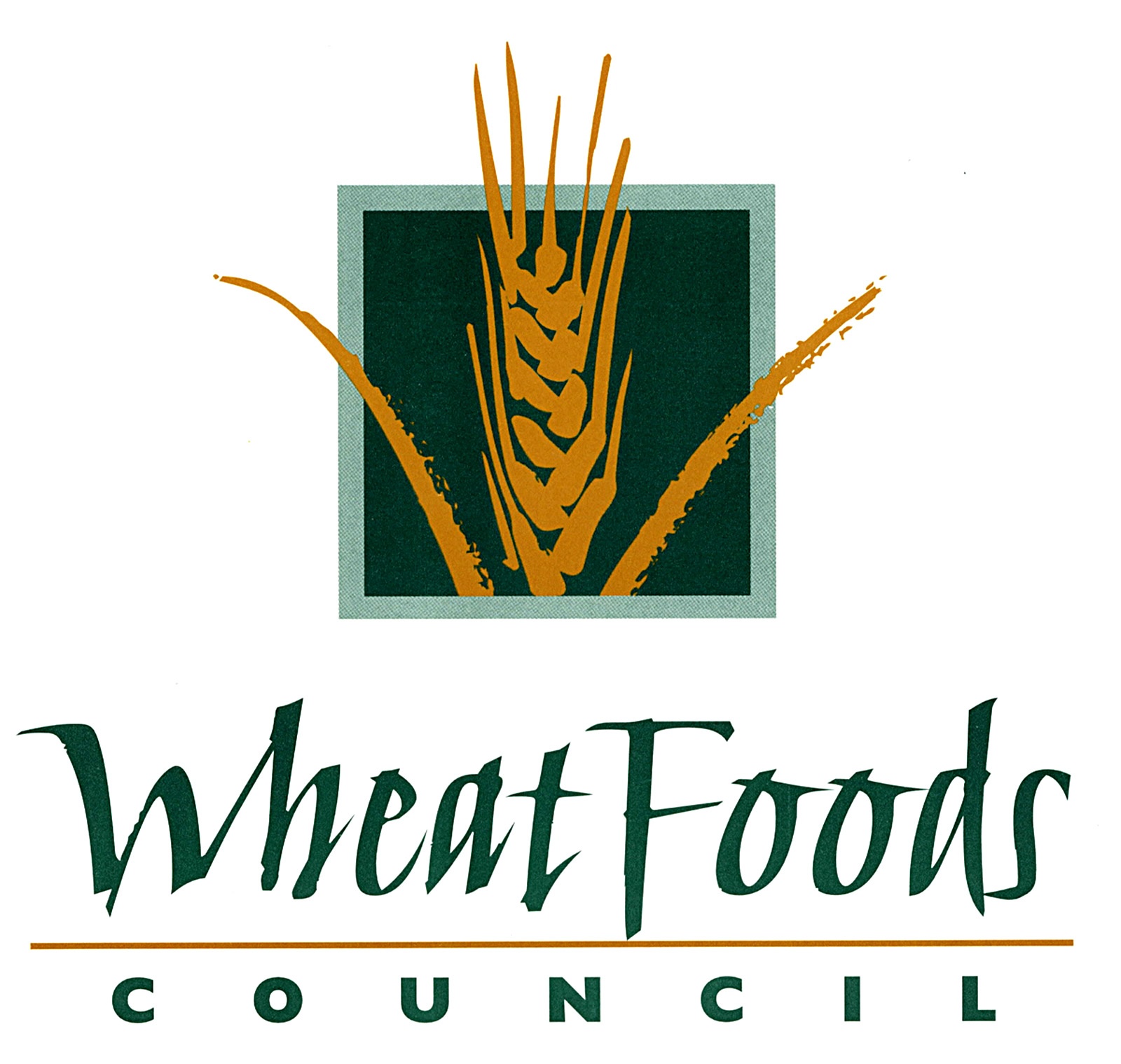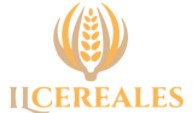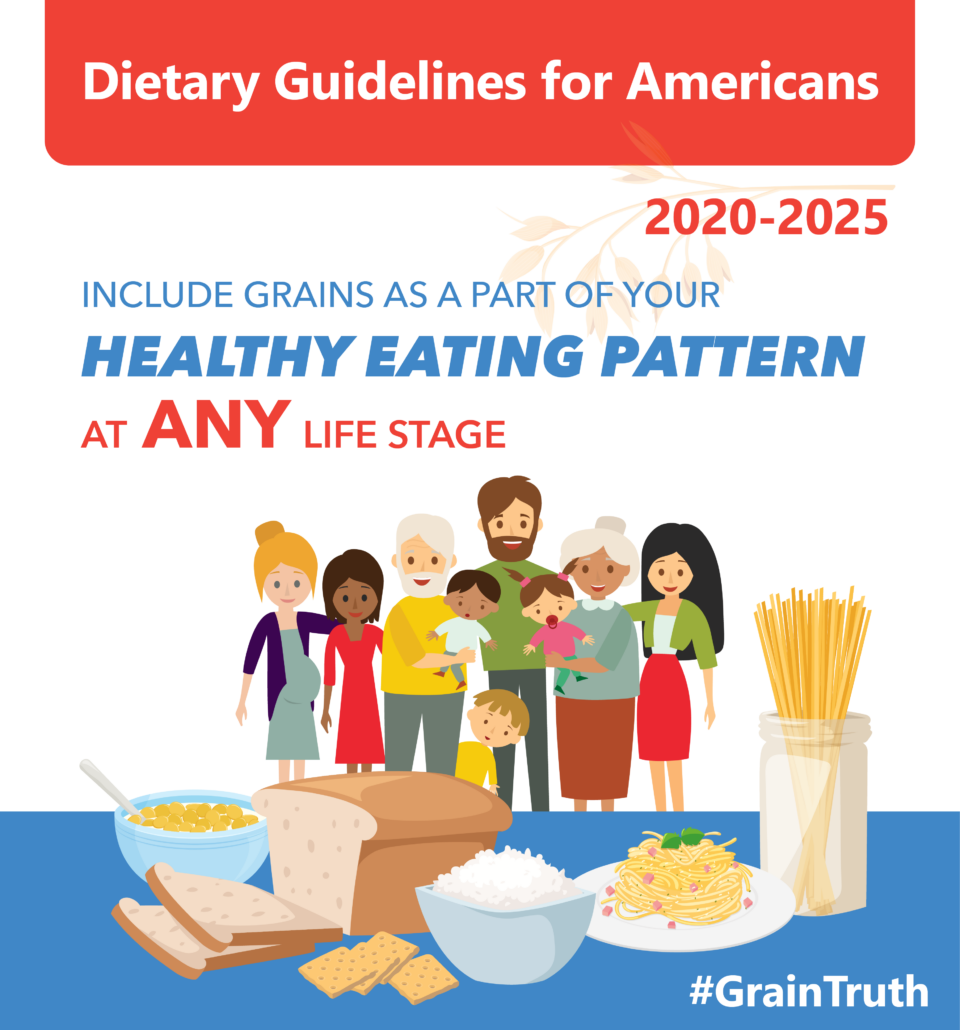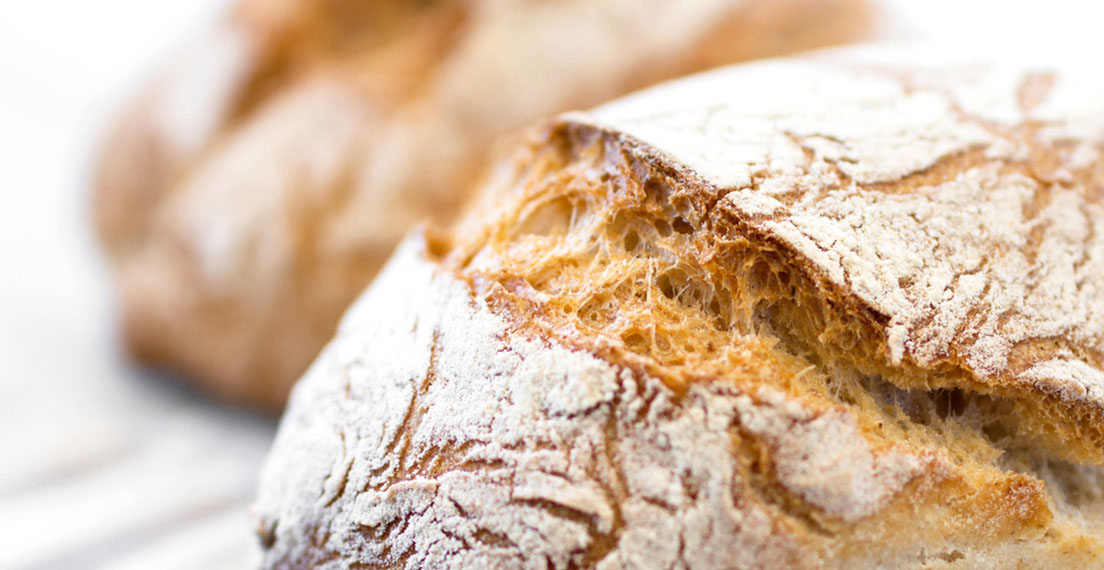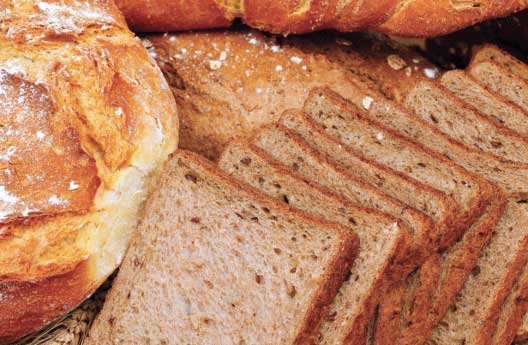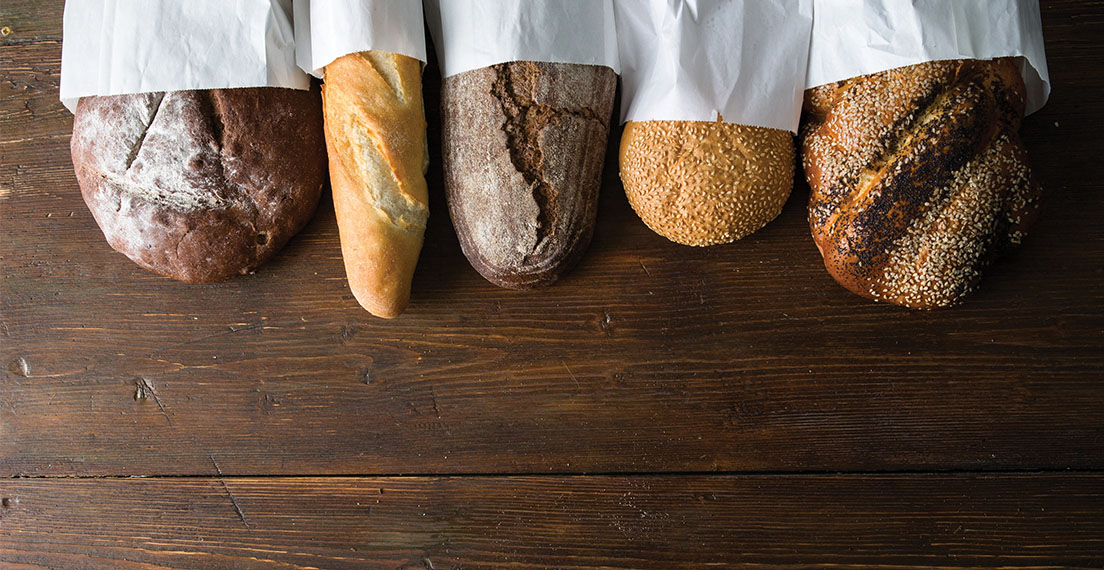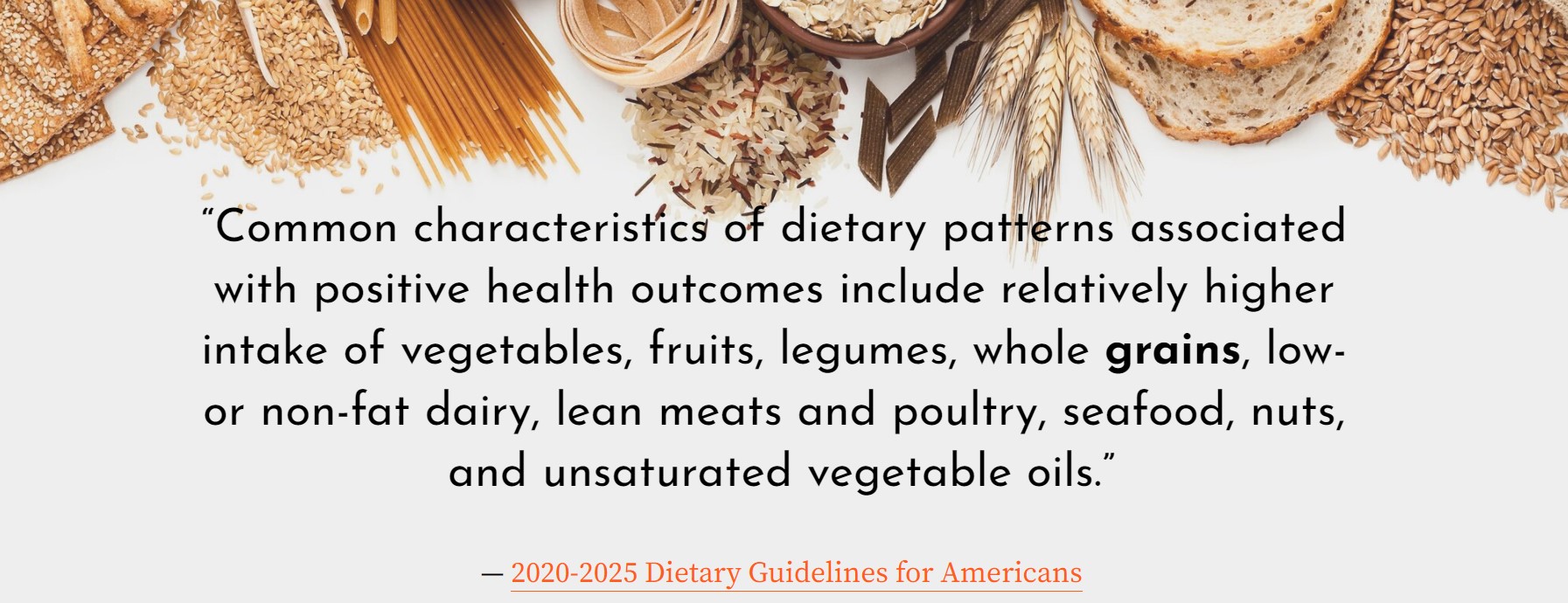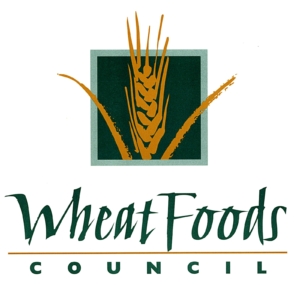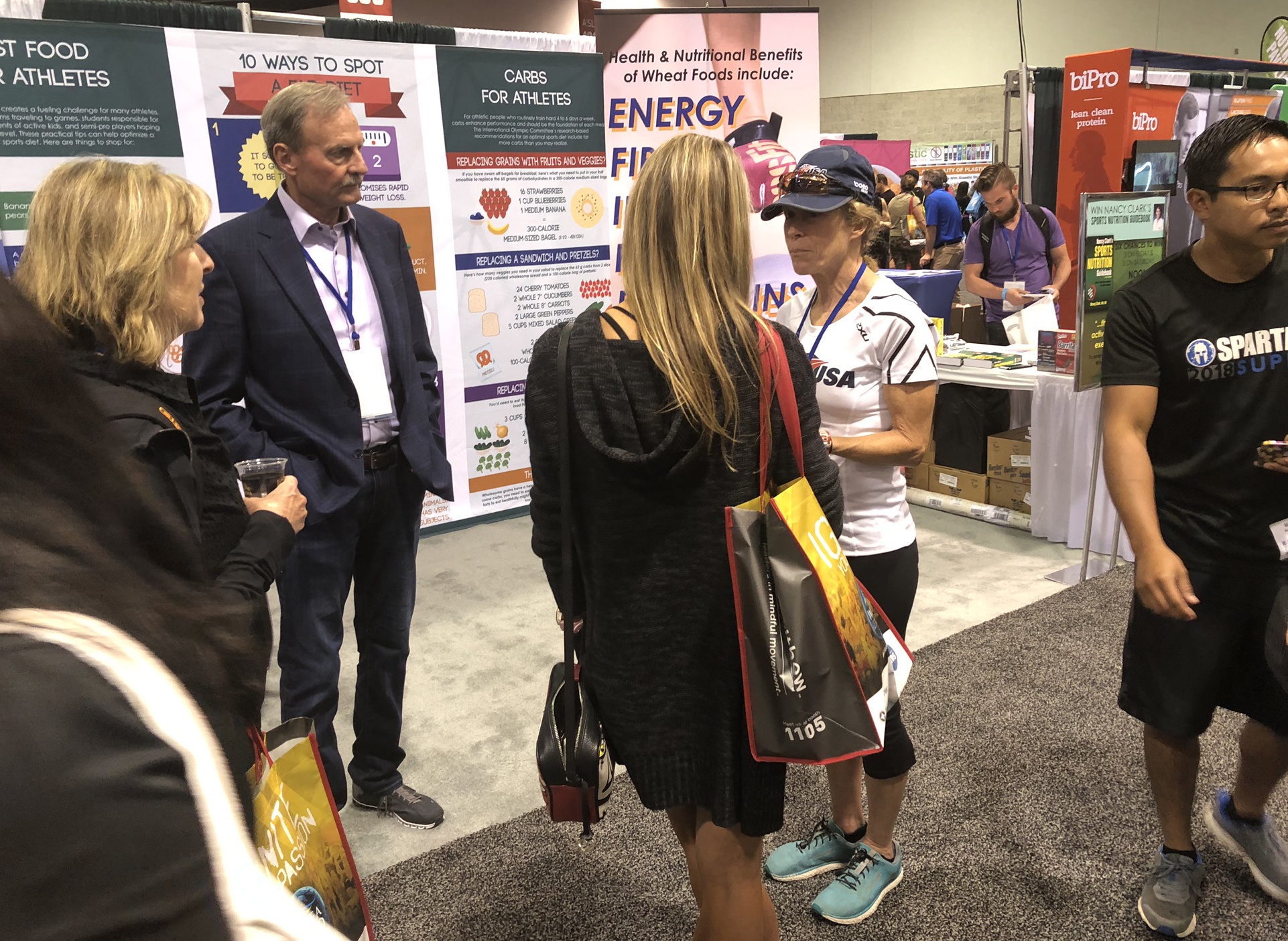As U.S. Wheat Associates (USW) President Vince Peterson often says, at any given hour of the day someone, somewhere, is talking about the quality, reliability and value of U.S. wheat. Wheat Letter wants to share just some of the ways USW has been working recently to build a preference for U.S. wheat in an ever more complex world wheat market.
Lauding Nutritious, Delicious U.S. Baking Ingredients in China
USW Beijing participated in the USDA Foreign Agricultural Service (FAS) “Discover U.S. Baking Ingredients and Trends” hybrid virtual promotion in August 2022 (activity banner in the photo above). The purpose of this activity was to raise Chinese bakers’ awareness of the nutrition, health benefits, taste, and versatility of U.S. baking ingredients. The FAS Agricultural Trade Office (ATO) in Beijing and 10 USDA Cooperators with products ranging from wheat, dried fruit and nuts to dairy sponsored the activity partnering with the China Association of Bakery and Confectionery Industry.
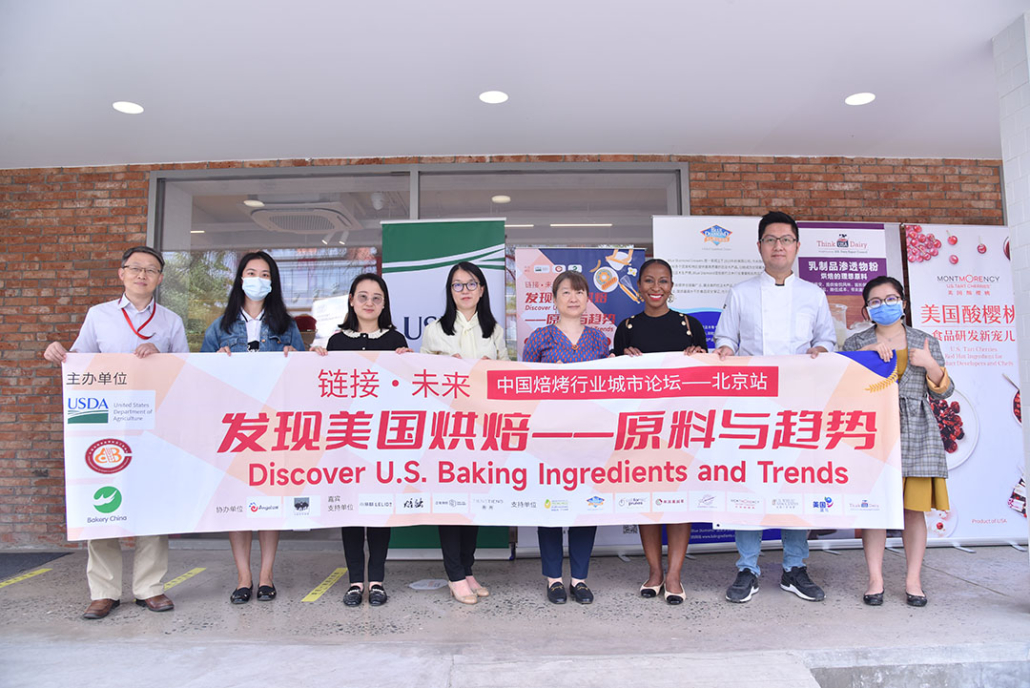
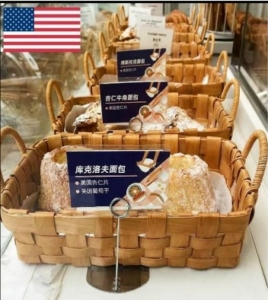
In-store promotion products using U.S. dried blueberry and California almond slices and U.S. wheat flour.
ATO Beijing reported the activity reached an audience of over 2.5 million netizens in China through social media platforms and
over 200,000 real-time viewers through livestreaming. There was also in-store promotions at leading bakery houses in Beijing where “consumers warmly welcomed the new products featuring U.S. baking ingredients,” ATO Beijing reported. Additionally, ATO Beijing strengthened connections with baking associations and businesses and generated trade leads with this activity. Read more here.
USW Beijing Technical Specialist Ting Liu and Marketing Specialist Kaiwen Wu played direct roles representing the essential quality of flour from U.S. wheat in the events. In the three full marketing years since the trade war ended, China has imported a total of more than 168 million bushels (4.58 million metric tons) of U.S. hard red winter (HRW), hard red spring (HRS), soft white (SW) and soft red winter (SRW) wheat, and have already imported almost 23 million bushels of U.S. wheat in the current marketing year that ends May 31, 2023.
Helping a Mexican Baker Expand Sales
In a technical support activity demonstrating to Mexican bakers how to extend their product lines using U.S. wheat flour, USW Mexico City enlisted Baking
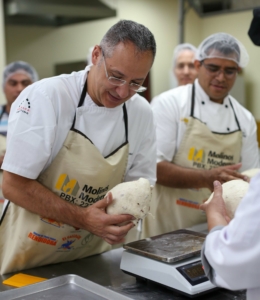
Didier Rosada
Consultant Didier Rosada to conduct an in-depth, multi-day workshop for one of the top three baking groups in Mexico. The commercial baker selected their best 25 master bakers to learn how to produce internationally recognized sourdough, functional breads, and savory breads for retail bakery sales. Rosada also demonstrated how to standardize pre-fermentation and natural sourdough processes to optimize production efficiency, products consistency, and quality in every store.
“Baking is changing in a good way,” Rosada said. “At my bakery, my process is as natural as possible, with long fermentation time, like it used to be done, to bring back the flavor profile of a good bread, its shelf life and texture, etc. And U.S. wheat classes are perfect for that. I am using a flour that is almost 100 percent hard red winter or sometimes combined with hard red spring wheat.”
Mexico is the leading importer of U.S. wheat in the world.
Healthier Wheat Foods for Older Taiwanese Consumers
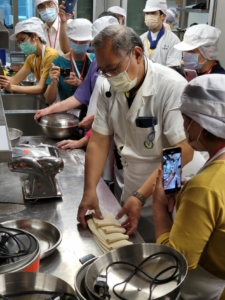
Well-known Taiwanese chefs demonstrated healthy Chinese wheat food products .
USW Taipei collaborated with the Department of Food and Beverage Management of Shih Chien University (USC) to conduct workshops on Chinese Wheat Food for the Elderly in October 2022. Chinese wheat foods are popular but a survey by the university indicated that more than 60% of elderly Taiwanese are not satisfied with the healthiness of the products.
USW Taipei Country Director Boyuan Chen and Technologist Wei-lin Chou invited well-known Taiwanese chefs to teach methods for making healthy handmade noodles, pan-fried stuffed buns, silk thread rolls, and pan-fried sweet potato pastry as well as steamed breads using U.S. wheat white flour and whole wheat flour. The 40 participants included teachers, students, and long-term elderly care community volunteers who made pan-fried stuffed buns for the elderly just after the workshop.
U.S. wheat imports by Taiwan have averaged 43.2 million bushels (1.18 million metric tons) of HRS, HRW and SW per year since 2017/18.
Continuing Milling Education Interrupted by COVID in Korea
USW Seoul had started to educate Food Technology undergraduate students at Won Kwang University about the fundamentals of U.S. wheat and flour milling technology in 2018. USW Seoul Food/Bakery Technologist Shin Hak (David) Oh resumed that effort this year. The goal is to give these future industry professionals a better understanding of why flour products from U.S. wheat make superior quality ingredients for Korean wheat foods. The early exposure to U.S. wheat and the value-added technical support from USW also builds future productive relationships.
On average the past five marketing years, South Korean millers have imported about 56.7 million bushels (1.54 million metric tons) of U.S. HRW, HRS, SW and SRW wheat per year.

USW Baking Technogist Shin Hak Oh lecturing to Korean food industry students on U.S. wheat and milling technology
U.S. Soft Wheat Best for Cookies, Cakes
USW Cape Town sent six participants from a large South African food company to a specialty soft wheat flour course at the Wheat Marketing Center in Portland, Ore., earlier in 2022. The course focused on cookies, crackers, and cakes made with flour from SRW and SW compared to flour from local and imported hard wheat that is used in South Africa. The participants also visited local grocery stores to gain insight into the many, varied U.S. products made from soft wheat flours.
USW Cape Town Regional Director Chad Weigand accompanied the food industry professionals to the course. He said participants were very impressed with the course results and comparative product quality, and he expected the company to begin testing products made with U.S. soft wheat flour.
Read more here about the South African wheat market.

